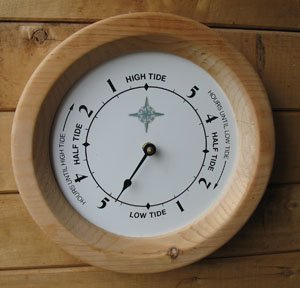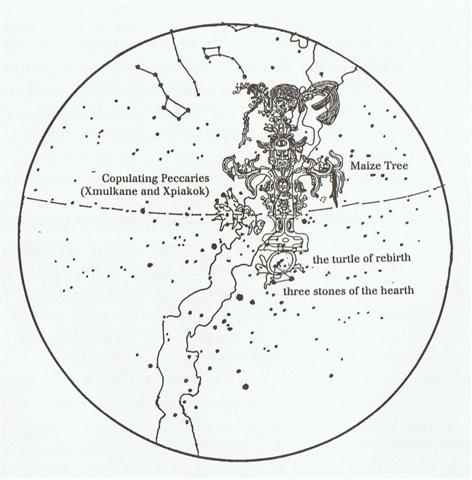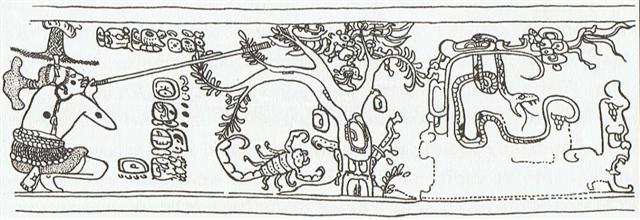The
Great Old Man at the
beginning of the
year (tagata
at left in Tua Haro
1) should be an
important sign. He
appears first at the
beginning of line
Ga2 and then also at
the beginning of
line Ga4:

 |
 |
 |
 |
 |
50 |
|
Ga1-27 |
Ga1-28 |
Ga1-29 |
Ga1-30 |
Ga2-1 (31) |
|
6h (91.3)
|
ξ Orionis
(92.5) |
Al Han'ah-4 |
Furud
(94.9) |
Well-22 |
|
ν Orionis
(91.4), θ
Columbae
(91.5), π
Columbae
(91.6) |
TEJAT PRIOR
(93.4), γ
Monocerotis
(93.5),
κ Aurigae
(93.6), κ
Columbae
(93.8) |
δ Columbae
(95.2),
TEJAT
POSTERIOR,
Mirzam
(95.4),
CANOPUS
(95.6), ε
Monocerotis
(95.7), ψ1
Aurigae
(95.9) |
|
He Maro 20 |
solstice
(172) |
22 |
23 |
St John's
Eve |
|
║June
16 |
17 (168) |
18 |
19 |
20 (*91) |
 |
 |
 |
 |
 |
133 |
|
Ga3-23 |
Ga3-24 |
Ga4-1 (84) |
Ga4-2 |
Ga4-3 |
|
ψ Leonis
(146.4),
Ras Elaset
Australis
(146.6) |
Vathorz
Prior
(147.9) |
υ╣ Hydrae
(148.4),
Ras Elaste
Borealis
(148.7) |
Tseen Ke
(149.9) |
ν Leonis
(150.1), π
Leonis
(150.6) |
|
Hora Iti 14 |
15 |
16 |
17 (229) |
18 |
|
║Aug 10
(222) |
11 |
12 (*144) |
13 |
14 |
 |
 |
|
 |
 |
 |
|
Ga8-17 |
Ga8-18 |
Ga8-19 (222) |
Ga8-20 |
Ga8-21 |
|
South
Dipper-8 |
Sheliak, ν
Lyrae
(285.1), λ
Pavonis
(285.7)
Atlas
|
Ain Al Rami
(286.2), δ
Lyrae
(286.3), κ
Pavonis
(286.5),
Alya (286.6) |
ξ Sagittarii
(287.1), ω
Pavonis
(287.3), ε
Aquilae, ε
Cor. Austr.,
Sulaphat
(287.4), λ
Lyrae
(287.7),
Ascella,
Bered (Ant.)
(287.9) |
Uttara
Ashadha-21 |
|
Φ SAGITTARII
(284.0), μ
Cor. Austr.
(284.6), η
Cor. Austr.,
θ Pavonis
(284.8) |
NUNKI
(288.4), ζ
Cor. Austr.
(288.5),
Manubrium
(288.8), ζ
Aquilae
(288.9) |
|
Ko Korˇ 30
(364) |
31 |
Tua Haro 1 |
2 |
3 (368) |
|
║Dec 26
(360) |
27 |
28 |
29 |
30 (364) |
Such
notable stars as
Canopus, Ras Elaset
Borealis (the
Northern Head of the
Lion), and Ain Al
Rami (the Eye of the
Archer) might have
had some influence
when the basic
structure was
determined.
The
triplet of glyphs
around the northern
summer solstice - I
suggest we should
read the stars
heliacally on side a
- are clearly only
the poor remnants of
true figures. A new
'fire' was needed
and Canopus could
deliver. The tiny
Rei between
Tejat Prior and
Tejat Posterior at
the beginning of
Gemini was the Mark
(al han'ah)
of the new 'earth' (henua)
beyond the Milky
Way:

... 'The earth rises
up from the sea
again, and is green
and beautiful and
things grow without
sowing. Vidar and
Vali are alive, for
neither the sea nor
the flames of Surt
have hurt them and
they dwell on the
Eddyfield, where
once stood Asgard.
There come also the
sons of Thor, Modi
and Magni, and bring
along his
hammer. There come
also Balder and
Hoder from the other
world. All sit down
and converse
together. They
rehearse their runes
and talk of events
of old days. Then
they find in the
grass the golden
tablets that the
Aesir once played
with.
Two children of men
will also be found
safe from the great
flames of Surt.
Their names, Lif and
Lifthrasir, and they
feed on the morning
dew and from this
human pair will come
a great population
which will fill the
earth. And strange
to say, the sun,
before being
devoured by Fenrir,
will have borne a
daughter, no less
beautiful and going
the same ways as her
mother.'

... At the end of
the Golden Age (Krita
Yuga) a class of
Asura who had
fought against the
'gods' hid
themselves in the
ocean where the gods
could not reach
them, and planned to
overthrow the
government. So the
gods implored
Agastya
(Canopus, alpha
Carinae = Eridu) for
help. The great
Rishi did as he was
bidden, drank up the
water of the ocean,
and thus laid bare
the enemies, who
were then slain by
the gods. But now,
there was no ocean
anymore! Implored by
the gods to fill the
sea again, the Holy
One replied: 'That
water in sooth hath
been digested by me.
Some other
expedient,
therefore, must be
thought of by you,
if ye desire to make
endeavour to fill
the ocean ...
Counting from the
tiny Rei
between the feet of
Castor there were 57
+ 133 = 190 days to
the Chinese 8th
station at Φ
Sagittarii, South
Dipper, marking
day 364 (Ko Korˇ
30).
|
Koro
1. Father
(seems to be
an older
word than
matu'a
tamÔroa).
2. Feast,
festival;
this is the
generic term
for feasts
featuring
songs and
banquetting;
koro
hakaopo,
feast where
men and
women
danced. 3.
When (also:
ana koro);
ana koro oho
au ki
Anakena,
when I go to
Anakena;
in case,
koro haga e
ţa,
in case
he wants it.
Vanaga.
If.
Korokoro,
To clack the
tongue (kurukuru).
Churchill.
Ma.:
aokoro,
pukoro,
a halo
around the
moon. Vi.:
virikoro,
a circle
around the
moon. There
is a
complete
accord from
EfatÚ
through Viti
to Polynesia
in the main
use of this
stem and in
the
particular
use which is
set to
itself
apart. In
EfatÚ
koro
answers
equally well
for fence
and for
halo. In the
marked
advance
which
characterizes
social life
in Viti and
among the
Maori the
need has
been felt of
qualifying
koro
in some
distinctive
manner when
its
reference is
celestial.
In Viti
virimbai
has the
meaning of
putting up a
fence (mbai
fence);
viri
does not
appear
independently
in this use,
but it is
undoubtedly
homogenetic
with Samoan
vili,
which has a
basic
meaning of
going
around;
virikoro
then
signifies
the
ring-fence-that-goes-around,
sc. the
moon. In the
Maori,
aokoro
is the
cloud-fence.
Churchill 2. |
|
Egyptian
bread, (-t,
female
determinant) |
 |
Phoenician
qoph |
 |
Greek
phi |
Φ(φ) |
|
... is
the 21st
letter
of the
Greek
alphabet
... Its
origin
is
uncertain
but it
may be
that phi
originated
as the
letter
qoppa
... In
traditional
Greek
numerals,
phi has
a value
of 500
or
500000
...
Isaac
Taylor,
History
of the
Alphabet:
Semitic
Alphabets,
Part 1,
2003:
'The old
explanation,
which
has
again
been
revived
by
HalÚvy,
is that
it
denotes
an
'ape,'
the
character
Q
being
taken to
represent
an ape
with its
tail
hanging
down. It
may also
be
referred
to a
Talmudic
root
which
would
signify
an
'aperture'
of some
kind, as
the 'eye
of a
needle,'
...
Lenormant
adopts
the more
usual
explanation
that the
word
means a
'knot'
...
... The
king,
wearing
now a
short,
stiff
archaic
mantle,
walks in
a grave
and
stately
manner
to the
sanctuary
of the
wolf-god
Upwaut,
the
'Opener
of the
Way',
where he
anoints
the
sacred
standard
and,
preceded
by this,
marches
to the
palace
chapel,
into
which he
disappears.
A period
of time
elapses
during
which
the
pharaoh
is no
longer
manifest.

When he
reappears
he is
clothed
as in
the
Narmer
palette,
wearing
the kilt
with
Hathor
belt and
bull's
tail
attatched.
In his
right
hand he
holds
the
flail
scepter
and in
his
left,
instead
of the
usual
crook of
the Good
Shepherd,
an
object
resembling
a small
scroll,
called
the
Will,
the
House
Document,
or
Secret
of the
Two
Partners,
which he
exhibits
in
triumph,
proclaiming
to all
in
attendance
that it
was
given
him by
his dead
father
Osiris,
in the
presence
of the
earth-god
Geb.
'I have
run', he
cries,
'holding
the
Secret
of the
Two
Partners,
the Will
that my
father
has
given me
before
Geb.
I have
passed
through
the land
and
touched
the four
sides of
it. I
traverse
it as I
desire.'
... |
After
a further 4 days -
beyond the end of
the old year in Ko
Korˇ 30 (364) - came
the 19th hour when
the Moon light had
returned in the
night sky and where
the nuku
season had been
inverted. At
heliacal Nunki - at
the end of Land -
the sands may have
run out from the
upper hemisphere of
the star hour-glass
and ahead was now
only the Sea ('High
Tide'), which once
again would return
to its place. The
hatchmarked (dark)
henua in
front in day 372 (=
12 * 31) has a dot
and at left could be
the Gemini twins
with Castor at left
and Pollux at right:
 |
 |
 |
 |
 |
|
Ga8-22 |
Ga8-23 |
Ga8-24 |
Ga8-25 |
Ga8-26 (229) |
|
19h (289.2) |
Al
Baldah-19 |
Aladfar
(291.1),
Nodus II
(291.5), ψ
Sagittarii
(291.6), θ
Lyrae
(291.8) |
ω Aquilae
(292.1), ρ
Sagittarii
(292.6), υ
Sagittarii
(292.7) |
Arkab Prior
(293.0),
Arkab
Posterior,
Alrami
(293.2), χ
Sagittarii
(293.6) |
|
λ Aquilae
(Ant.)
(289.1), γ
Cor. Austr
(289.3), τ
Sagittarii
(289.4), ι
Lyrae
(289.5), δ
Cor. Austr.
(289.8)
|
AL BALDAH,
Alphekka
Meridiana
(290.1), β
Cor. Austr.
(290.2) |
|
Tua Haro 4 |
5 |
6 |
7 (372) |
8 |
|
║December 31 |
║January 1
(366) |
2 |
3 |
4 |


... In a
moon
calendar
from
Hawaii -
I have
fetched
the
following
information
from
Makemson
-
various
aspects
of the
days in
a month
are
described,
when to
plant,
when to
go
fishing
etc.
Often it
is
stated
that in
a
certain
day
there is
ebb,
though
this of
course
cannot
reflect
reality
because
it
should
be ebb
and
flood
during
all the
days of
a
calendar:
| 1 Hilo |
7 Ole-ku-kahi |
14 Akua |
21 Ole-ku-kahi |
26 Kane |
| 2 Hoaka |
8 Ole-ku-lua |
15 Hoku |
22 Ole-ku-lua |
27 Lono |
| 3 Ku-kahi |
9 Ole-ku-kolu |
16 Mahea-lani |
23 Ole-pau |
28 Mauli |
| 4 Ku-lua |
10 Ole-pau |
17 Kulu |
24 Kaloa-ku-kahi |
29 Muku |
| 5 Ku-kolu |
11 Huna |
18 Laau-ku-kahi |
25 Kaloa-ku-lua |
| 6 Ku-pau |
12 Mohalu |
19 Laau-ku-lua |
| |
13 Hua |
20 Laau-pau |
I have
marked
with red
those
day
names in
the
month
when it
is said
to be
ebb.
With
black I
have
marked 2
days
when a
high sea
level is
noted.
The blue
items
are
defined
neither
as ebb
days nor
flood
days.
From
number
18 in
the
list,
Laau-ku-tahi
(Rakau-tu-tahi
- 'first
night of
tree
rise'),
there
are 8
days
which
surely
must
belong
in the
phase of
waning
moon. In
contrast
we can
count to
16 days
from
item
number 1
-
Hilo
(Hiro
-
Mercury)
- which
should
belong
in the
phase of
waxing
moon,
i.e. ⅔
of 24
days
probably
represent
the
Waxing
Moon and
⅓ of 24
days
Waning
Moon.
Number
17,
Kulu
(Turu),
should
be the
day when
'the
rising
fish'
turns
around
into a
'descending
fish'.
Number
17 also
represents,
we know,
the
first
item in
a new
sequence
of
events.
The
first
sequence
of
glyphs -
in at
least
certain
glyph
lines -
are
ending
with
number
16.
| Turu
To come down, to go down, to descend; ka-turu-age koe ki tai, go down to the sea now; turuga, coming down, descent.
1. To fall in drops, to flow, to leak, to descend, a drop; turu ki tai, to take refuge at sea; hakaturu, to cause to descend, to lower, to take soundings; hakaturuturu, to heave and pitch. Turuga, declivity. Turuvai, water conduit. P Mgv.: akaturu, to conduct water in a drain. Ta.: tuturu, to fall in drops. 2. To stay, to prop. T Pau.: turu, a post, pillar, to sustain. Mgv.: turu, a support, rod, stay, to sustain. Ta.: turu, stay, support; turuturu, posts of a house. Ha.: kukulu, a pillar, a post. 3. To come, to arrive, to overcome; tehe e turu, through and through; hakarava hakaturu, quadrangular. |
Of great
interest
for us
is the
last 4
items,
which
are
explicitly
stated
as being
ebb:
| 26 Kane (Tane) |
Kane is the twenty-seventh night of the Moon. It was a day of prayer and on the day following, that of Lono, the prayer was freed. That day and the day of Lono are good days for planting potatoes. It is a day of very low tide but joyous for men who fish with lines and for girls who dive for sea-urchins. |
| 27 Lono (Rogo) |
Lono is the twenty-eight night of the Moon. It is a day for planting crops. The tide is low, the sea calm, the sand is gathered up and returned to its place; in these days the sea begins to wash back the sand that the rough sea has scooped up. This is one account of the night of Lono. |
| 28 Mauli (Mauri) |
Mauli is the last night that the Moon is visible and the name means 'the last breath'. It is a very good day for planting, a day of low tide. 'A sea that gathers up and returns the sand to its place' is the meaning of this single word. The Moon rises just a little before sunrise and it is the twenty-ninth night of the Moon. |
| 29 Muku (Mutu) |
Muku is the night on which the Moon does not rise. The name means 'finished' and it refers to the 'dying' of the Moon. It is a day for planting crops, a day of low tide, when the sea gathers up and returns the sand to its place, a day of diving for sea-urchins, small and large, for gathering sea-weed, for line-fishing by children, squid-catching, uluulu [uruuru] fishing, pulu [puru] fishing and so forth. Such is the activity of this day. |
Certainly
we must
read the
ebb
statements
at the
end of
the
calendar
as a
Sign. We
are
meant to
observe
it and
to
memorize
it.
Could it
mean we
should
add 4
nights
from the
end of
the
previous
month to
those 16
first
according
to the
calendar?
16 + 4 =
20 is
the
number
of
nights
in a
month
which
should
be
counted
according
to the
Polynesians
on
Gilbert
Islands.
20 is
the
number
of
fingers
and toes
(remember
Mahuika,
another
'fish')
and also
the
number
of years
between
the
Great
Conjunctions
between
Saturn
and
Jupiter.
Also we
must
notice
the
oddity
of
numbering
the
nights,
why is
for
instance
Kane
night
number
27, when
it
occurs
as item
28? The
numbers
mentioned
in the
calendar
agrees
with
those
expected
up to
and
including
number
25
Kaloa-ku-lua
(Tagaroa-tu-rua),
but
night
number
26 is
conspiciously
absent.
Should
we
remember
26 as
the day
of the
Sun
King?
From the
absent
number
26 there
is ebb.
|
The
absent Hawaiian
night (after the
25th) should be
number 0, because
they were counting
their months in
haab time. The
Mayas numbered there
haab nights 0
Pop, 1 Pop, 2 Pop,
etc.

...
Also the ordinal
number in the month
according to the
haab calendar
was prefixed (see B
cogwheel). But the
counting began with
0 instead of with 1
(cfr for instance
1 Imix in the A
cogwheel, the
tzolkin). The
last (19th) haab
month (Vayeb
- or as spelled in
the picture:
Uayeb) had only
5 days, and its
highest number
therefore became 4.
Otherwise the
highest number in a
month was 19. Months
were defined in the
haab
calendar, not in the
tzolkin.
A
star which was about
to go down (turu)
together with the
Sun in the west
would be too close
to the Sun during
the last 16 nights
for it to be
visible. 168 - 16 =
152 (June 1). 260 =
152 + 108 =
September 17.
However, a better
structure ought to
be 4 (Bacabs) + 104
(= 2 * 52) + 152, in
which case 256 =
September 13 would
be a good final
calendar day for the
Sun. September could
be read as the 9th
month and day 13
then allude to 91 *
3 = 273 (September
30). But 273 - 256 =
17 = 16 + one more.
There
were 3 Rakau
nights following
Turu (17) and a
splendid 'tree of
stars' could have
been visible,
showing were the
Face of the Sun was
not. Instead his cut
off head was up in
the dry Y of the
scorpion tree in
Xibalba and this
Tree arrived there
at the same time as
his head:
... The state of the
tree loomed large in
their thoughts,
because it came
about at the same
time the head of One
Hunaphu was put in
the fork ...


|
Rakau
Raau,
medicine,
remedy, drug.
Ra'a'u,
scratch on
the skin.
Rakau, a
plant.
RÔkau,
goods,
property.
Vanaga.
1. Wood;
rakau ta,
cudgel,
stick. P
Pau.:
rakau,
tree, to
dress a
wound. Mgv.:
rakau,
wood,
timber, a
tree;
medicine, a
remedy; an
object. Mq.:
ßkau,
wood, tree.
Ta.: raßu,
id. 2.
Medicine,
remedy,
potion,
ointment,
furniture,
any precious
object,
resources,
baggage,
riches,
heritage,
dowry,
merchandise,
treasure,
wealth;
rakau
hakaneinei,
purgative;
rakau nui,
rich,
opulent;
rakau kore,
poor,
beggar,
indigent,
miserable,
an inferior;
hakakamikami
ki te rakau,
to
impoverish;
rakau o
te miro,
ballast.
Mq.: akau,
anything in
general. The
medicine
sense is
particularized
in Tonga,
Nukuoro,
Hawaii,
Tahiti,
Mangareva,
Paumotu. In
no other
speech does
wood stand
so fully for
wealth of
possessions,
but it will
be recalled
that
Rapanui
is destitute
of timber
and depends
wholly upon
driftwood.
Churchill. |
|


















